The choice and subtleties of operating a motor for a vacuum cleaner
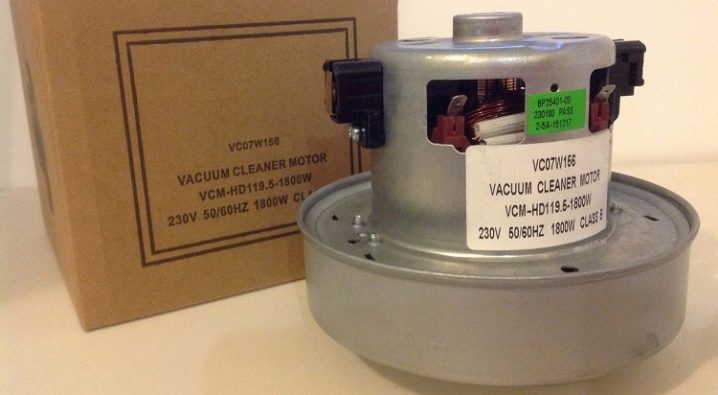
The vacuum cleaner has long been one of the most faithful and effective human helpers in the fight against dust. But, like any technique, vacuum cleaners, whether expensive or cheap, tend to break down and fail. Worst of all, when the motor of the vacuum cleaner breaks down due to improper operation or voltage drop. Therefore, you should figure out what kind of part it is, how to choose it and how to disassemble it in case of breakdown.
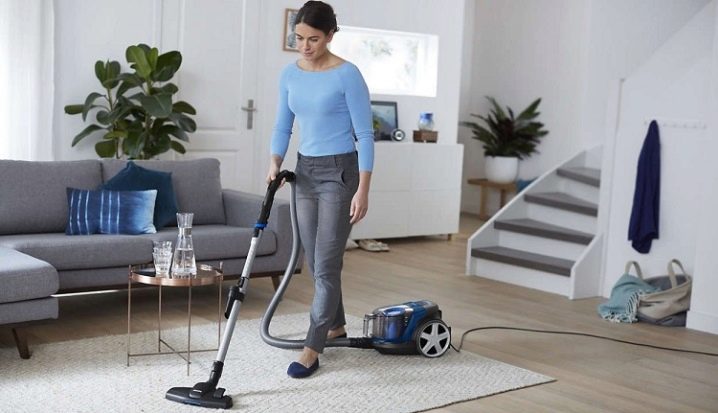
Motor characteristics
If you are faced with the fact that your vacuum cleaner has broken, then you should not immediately run to take it to the workshop and pay fabulous money for repairs. You can try to delve into this issue and, possibly, carry out an independent repair or replacement of the engine. It should be understood that this is the main part in any modern vacuum cleaner.
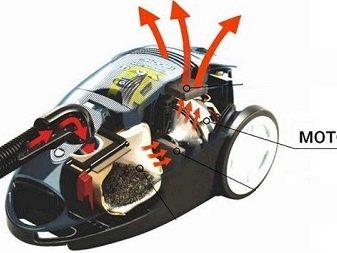
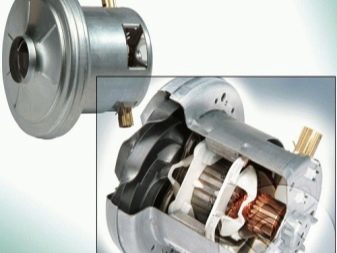
To replace the engine, you will have to pay attention to some parameters.
- The appearance of the motor. They may differ from manufacturer to manufacturer.
- Power. It is very easy to define and compare this parameter. This information is indicated on the motor itself, as well as on the vacuum cleaner. It is important to understand that we will be interested in the total power, that is, the speed. Not to be confused with suction power.
- Dimensions. This characteristic is also very important, as it may happen that the purchased part simply does not fit into your old vacuum cleaner. Measurements should be carried out independently. First you need to measure the height of the entire device, excluding the bushings, if any, and the bearings. The next step is to measure the diameter of the fan impeller. And also you need to measure its height.
- Motor holder hole. This part should be examined very carefully.
- Presence under the impeller of the motor the so-called skirt.



What are they?
The electric motor for a vacuum cleaner can have various features. For example, if it is non-separable, then it is a monolithic structure that can only be replaced with exactly the same part. And trying to disassemble it and fix it is useless. Motors can be called universal. But there is no such thing as a universal engine. And the problem is not in the characteristics, but in the physical performance. Each manufacturer of vacuum cleaners gives them different design features, and a model that fits, for example, Supra vacuum cleaners, may not be suitable for Philips vacuum cleaners due to its physical characteristics.
Motors are characterized as universal if they can operate from both direct and alternating current. At the same time, an induction motor is installed in many vacuum cleaners. It differs from a universal motor in that it will operate exclusively on direct current. And also electric motors differ in the presence of the so-called brush-collector assembly: they are commutatorless and collector-less. These solutions can vary in the number of phases. According to this parameter, they are:
- single-phase;
- biphasic;
- three-phase.


Of these three categories, a three-phase solution will be the most effective. It uses a little more power, but the performance gain is worth it. Their main advantage will be higher vacuum suction rates. In addition, the rotation speed of a 2-stage vacuum motor will be 1–1.4 thousand revolutions per minute, which will be higher than that of a 3-stage analogue.This will mean that they wear out faster than 3-stage solutions.
It should be noted that two-stage solutions are cheaper. But they break much more often. The cost of repairing them may exceed the sum of the cost of a vacuum cleaner equipped with a three-phase motor.
Therefore, when buying a unit, compare the cost of the device and saving money in the future, simplicity and reliability of operation.


Brands
The brands that produce electric motors for vacuum cleaners can be divided into 2 categories. The first is well-known companies that also manufacture the vacuum cleaners themselves. That is, the company carries out a full cycle of production of household appliances. This should include such famous brands as Beko, Bosch, Electrolux, Gorenje, LG, Moulinex, Philips, Rowenta, Samsung, Thomas, Zanussi, Zelmer. All these companies are well known to the consumer and for the most part produce high-quality products that do not break down too often, work well and efficiently and are convenient to use.



The second category of manufacturers is companies that do not directly produce vacuum cleaners, but make various components for them. For example, the same engines. Such manufacturers include AEG, Ametek, Domel, LPA, Ningbo, Sip Chinderson Motor, Poletron, SKL, Whicepart. These manufacturers make products for specific models. This means that the suitable analogs of the motor for a particular vacuum cleaner will depend on its brand.

How to choose?
It is extremely important to choose a suitable motor for the vacuum cleaner, because the wrong selection will sooner or later lead to a breakdown of the device. A number of manufacturers do not make their own engines, but simply assemble them. Therefore, it is important to know not the name and model, but the physical parameters of the device. In addition to them, its type and purpose for this or that type of cleaning will also be important: dry, wet, or supports both types. The fact is that if moisture gets into the motor, which is intended for dry cleaning, it will simply break.
And also the suction power will be important. Usually, the manufacturer focuses on overall power. It will depend on a number of factors:
- physical characteristics of the device;
- inlet pressure;
- air flow performance, which depends on the size of the impeller, the number of fan stages, the length of the hose, the type of anchor;
- coefficient of useful work.


In addition, when choosing a vacuum cleaner motor, you should pay attention to the category and method of case mounting. This is important because some models may have special grooves and latches, others - rings and gaskets, and some universal solutions are attached to the body with bolts, for which reason the angle of the fastener holes relative to the collector-brush assembly of the device should be taken into account.
The most reliable way would be to select a motor either by a sample or by a manufacturer's spare part code.

Subtleties of operation
Every year more and more burdens fall on vacuum cleaners in terms of cleaning premises. And even the products of well-known brands do not always cope with the task. Let's try to understand some of the intricacies of operation in order to understand why the device fails. It should be said that the rotor of the electric motor of the vacuum cleaner rotates at a speed of about 35 thousand revolutions per minute. It is one of the most important parts of the engine that drives it. Such a serious amount of work creates a rather large load on the group of bearings and the smallest load on the stator winding.
There are reliable bearings in vacuum cleaner electric motors. According to the technical regulations, the operating time of this part should be no more than 1,000 working hours. In addition, an important aspect for modern electric motors is the cooling of the brush-collector part, as well as the entire device as a whole. If an additional cooling system is not organized, then the overheating of the device occurs within 20 minutes after the start of its use.And thanks to additional cooling mechanisms, the overheating threshold will increase by 5 times.


And it should also be understood that in conventional electric motors, which are installed on vacuum cleaners today, cooling is carried out thanks to the air currents passing through the motor. Therefore, filter cleanliness is an important prerequisite for successful work. The more clogged they are, the more difficult it is for air masses to pass through the holes, and the more the load on the motor increases. By the way, one of the overheating fuses is the ability to control the engine speed and, as a result, the suction power of the device.
To check if there is overheating, you just need to plug the device into an outlet and carry out cleaning in different modes. Often this is how the engine capabilities and filter clogging are checked so as not to disassemble the device.
If the device shuts down, the filters should be checked and cleaned. The more carefully the owner of the technique treats the technique, the longer it will last.

How to disassemble?
If you hear extraneous noises, or the device does not work correctly, the motor must be disassembled for inspection. For disassembly, you will need to have on hand:
- small vice;
- hacksaw;
- file;
- screwdriwer set;
- spanners;
- wooden blocks;
- pliers.

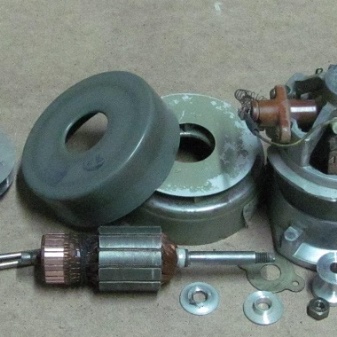
The analysis is carried out step by step.
- First, using a screwdriver, unscrew the bolts, as well as the spring-type clamps on the contact brushes and brush holders.
- We remove the casing protecting the impeller by tapping with a hammer on the housing and bearings. It is better to do this through the bars.
- Now you need to remove the impeller. First you need to unscrew the impeller nut. To do this, you need to lock the rotor in order to leave the winding and armature of the electric motor located in the back without damage. This can be done by pressing it firmly through the holes in the sides of the motor housing where the brushes are inserted. This can be done using small wooden blocks. They are inserted into the holes and pressed tightly against the anchor.
If the nut for some reason does not unscrew, then it should be warmed up to melt the sealant holding it on the thread. A small burner can be used to avoid damaging the plastic of which the impeller is made.
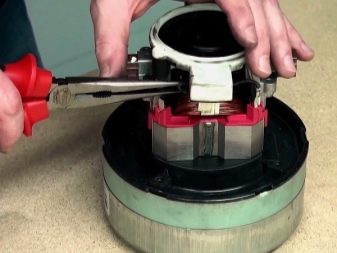

Now all parts of the motor can be easily removed using the simplest screwdrivers. The engine is disassembled, and we are able to understand what the breakdown is.
For how to disassemble the vacuum cleaner motor, see the next video.













The comment was sent successfully.